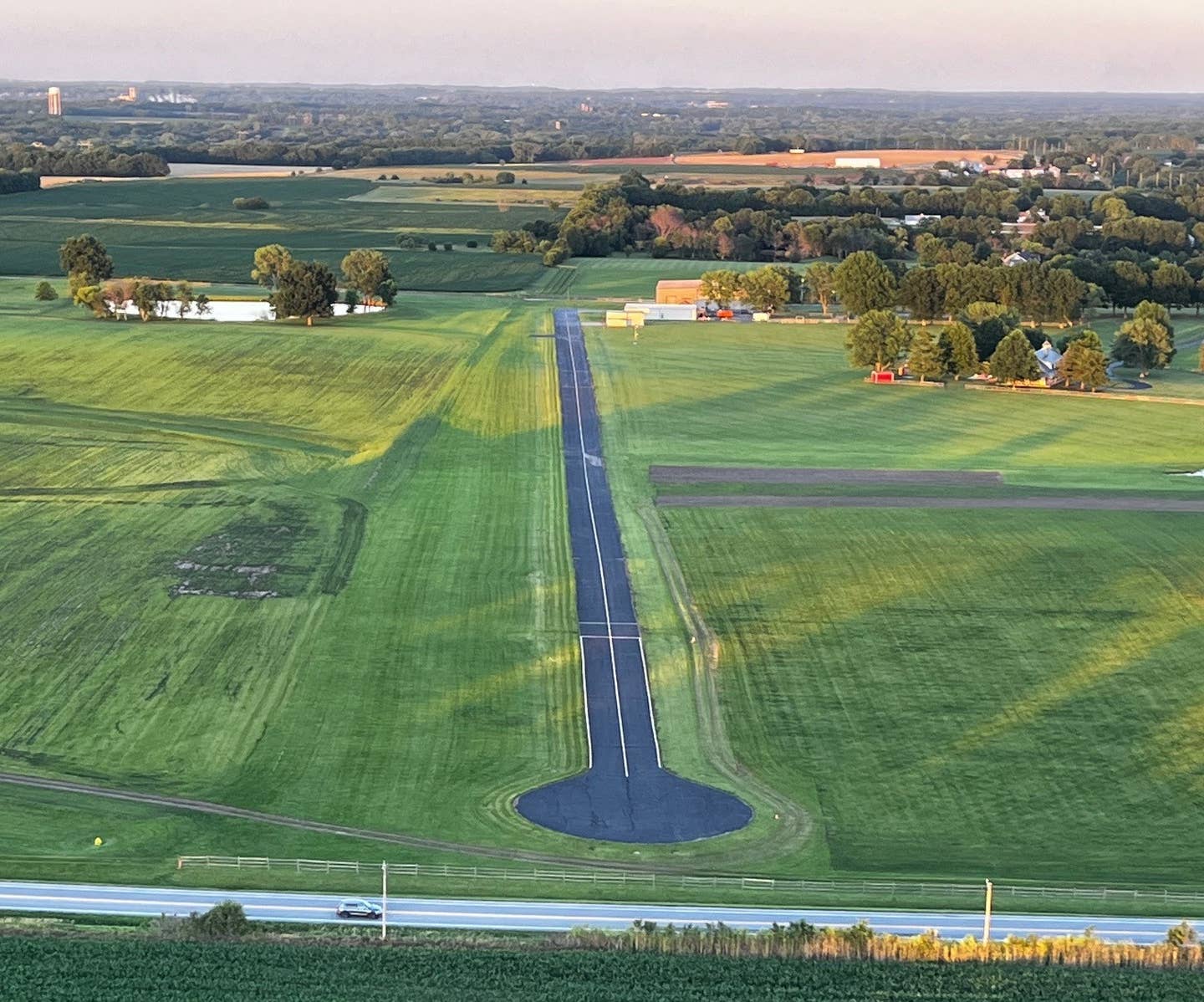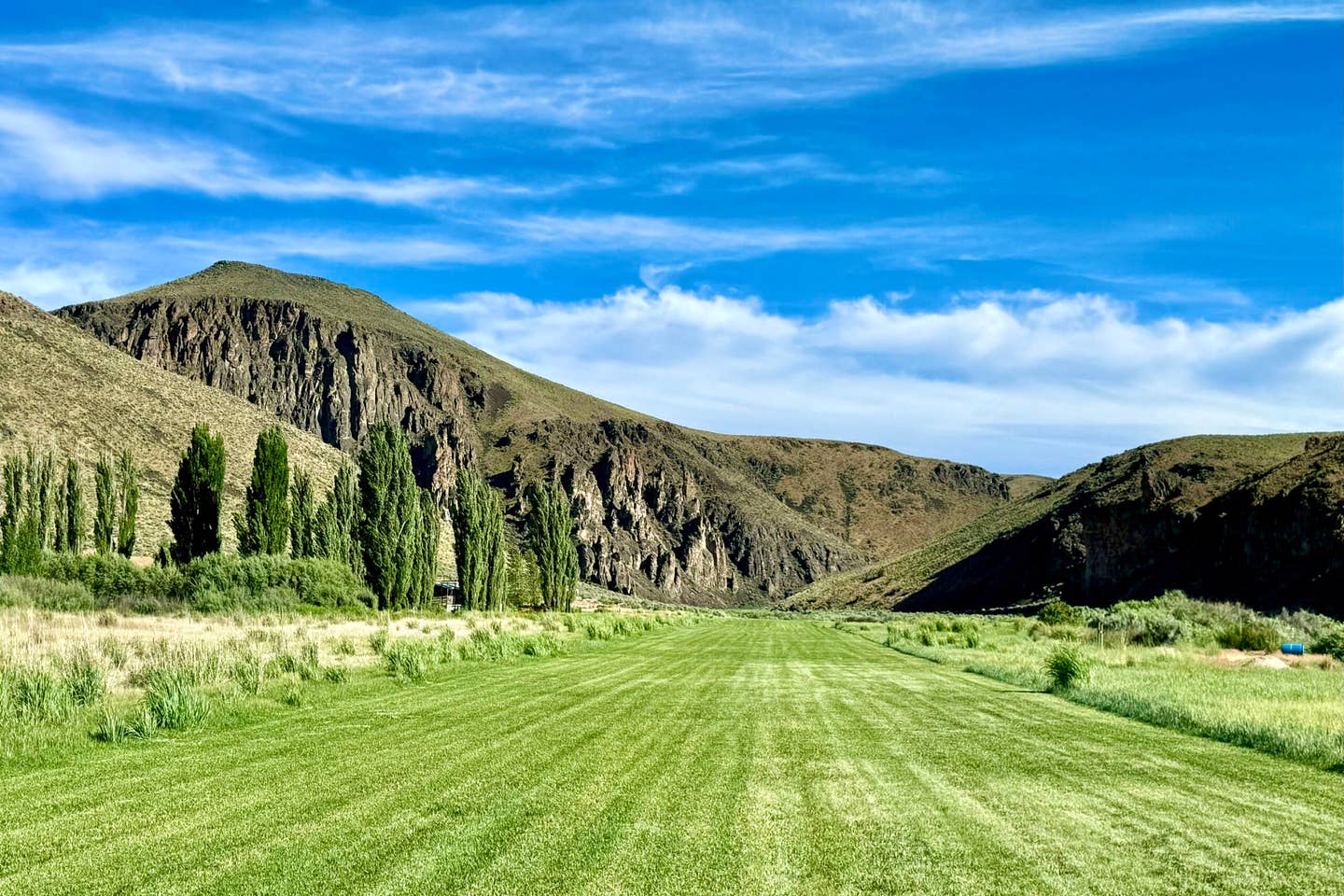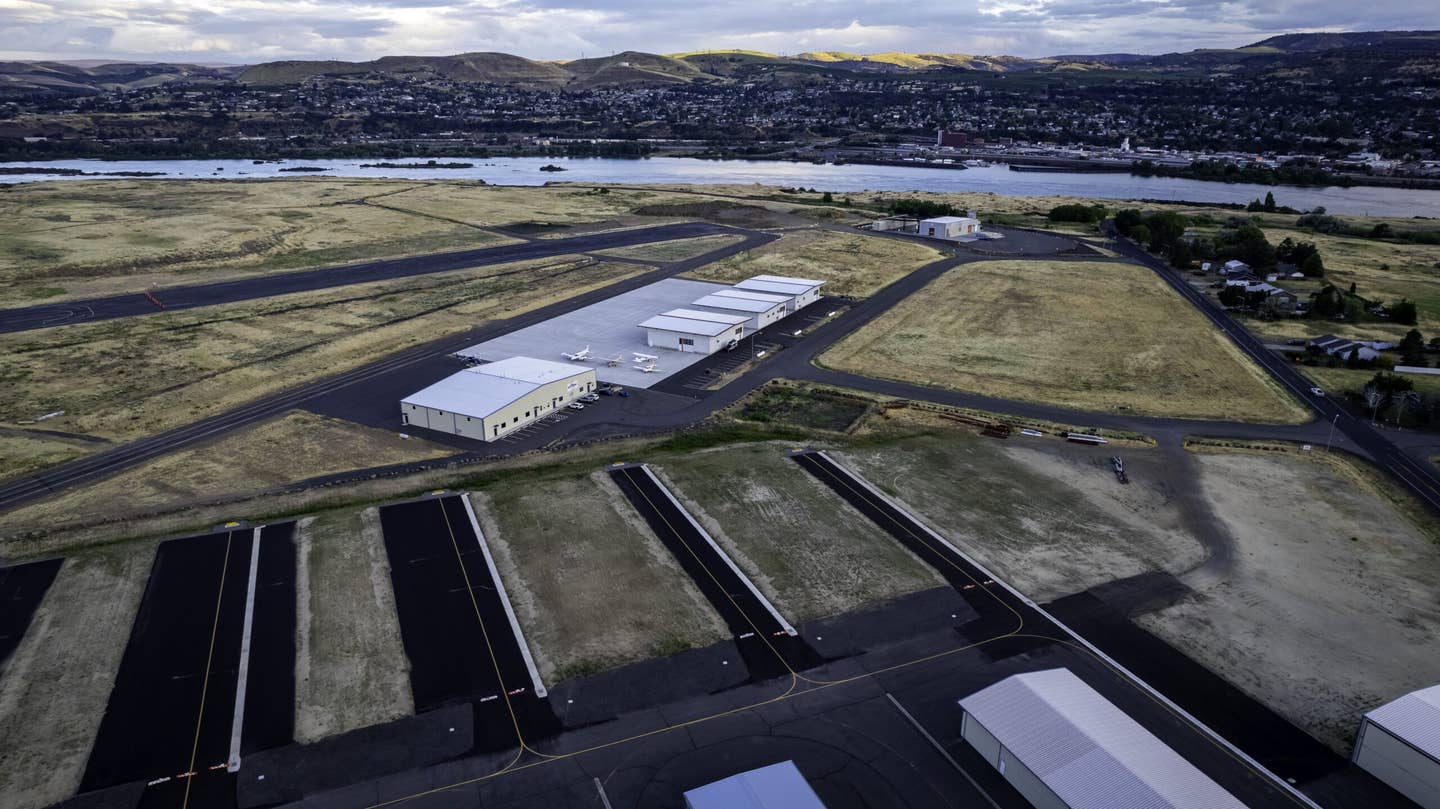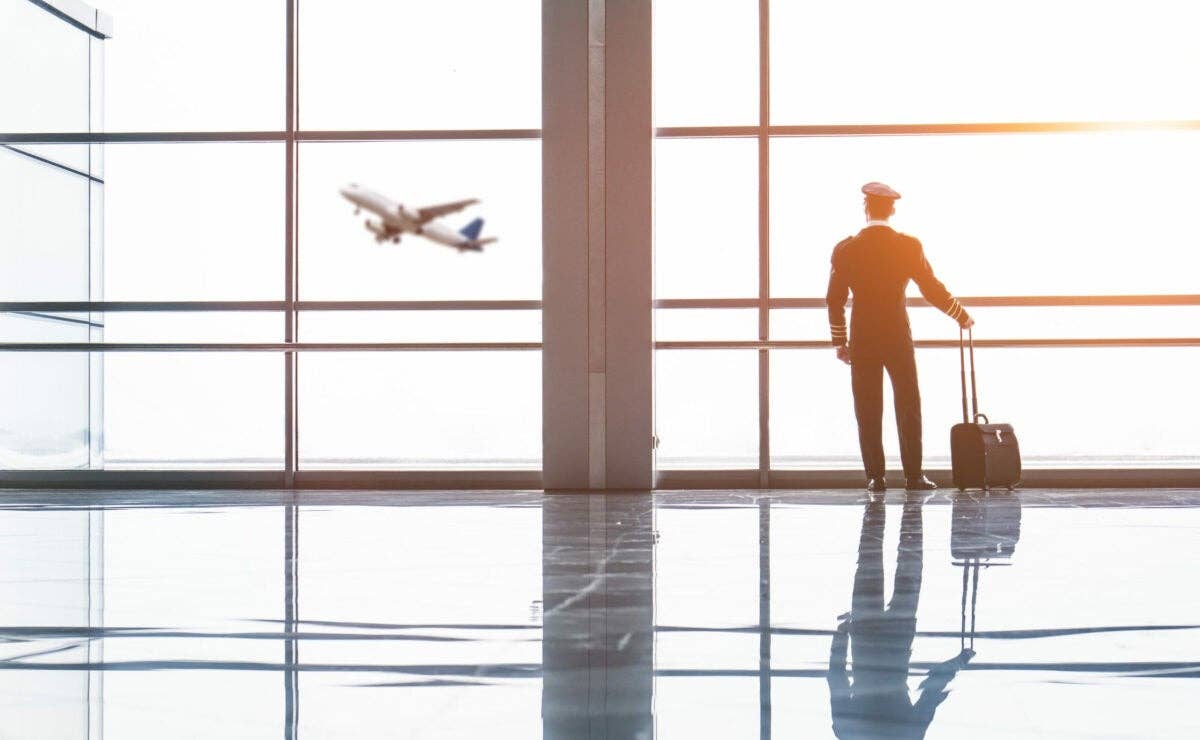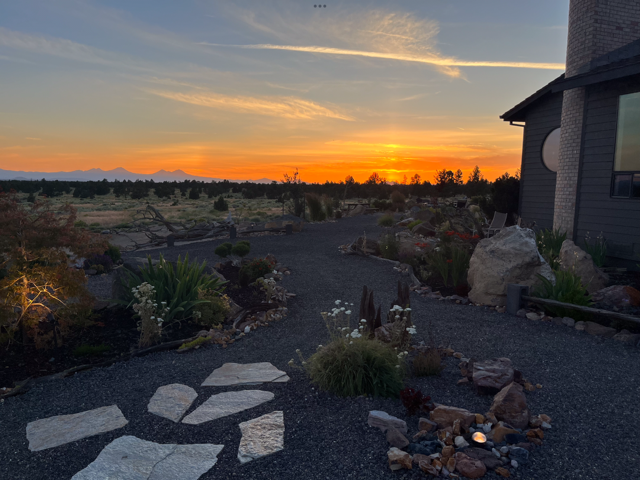Flying the Finger Lakes Region of New York
Winemaking, museums, and aviation history highlight the Finger Lakes corner of New York.
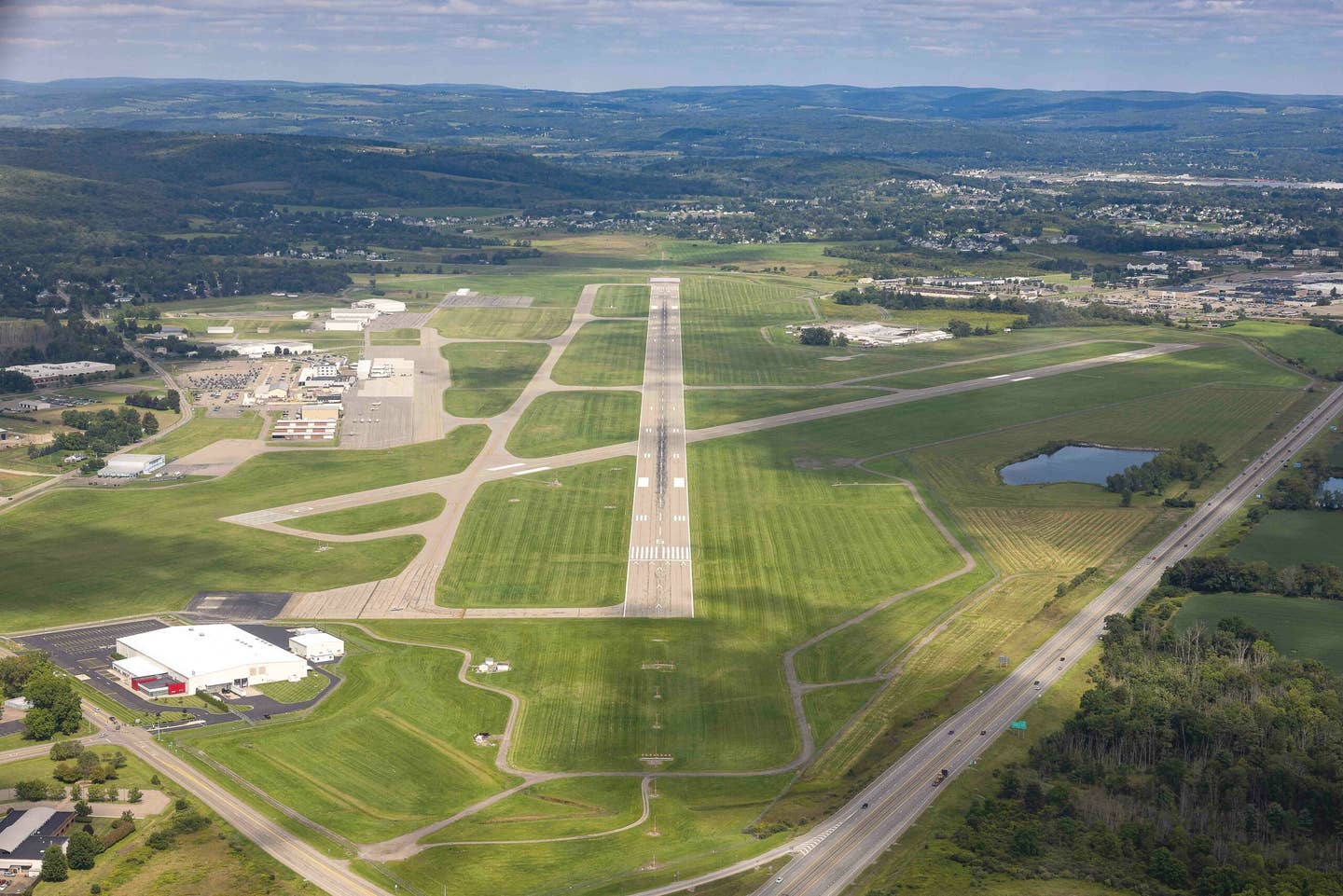
We chose Elmira Corning Regional Airport (KELM) as
a starting point for exploring the area. [Stephen Yeates]
As you fly north across the middle of upstate New York on a clear day toward places like Ithaca (KITH), Cortland County (N03), or Corning-Painted Post (7N1), you will see them on the horizon: the Finger Lakes.
You are likely to spot Seneca Lake first, as it is 38 miles long and covers the greatest area of the 11 bodies of water that make up the Finger Lakes region. Just to the east is runner-up Cayuga Lake, with the city of Ithaca at its southern tip. It is huge, too, and it can be difficult to tell which of the top two is larger. Cayuga is 2 miles longer, but Seneca covers more acreage. The lakes have a roughly north-south orientation and fan out across the state’s midsection, seeming to point toward Lake Ontario.
If you're not already a subscriber, what are you waiting for? Subscribe today to get the issue as soon as it is released in either Print or Digital formats.
Subscribe NowYou might think even the smallest of the Great Lakes would make the Fingers look like puddles, but they remain impressive, especially from the air. There are 11 Finger Lakes: Canadice, Canandaigua, Cayuga, Conesus, Hemlock, Honeoye, Keuka, Otisco, Owasco, Seneca, and Skaneateles. The lakes range in length from 3 miles to 40 miles and are as deep as 618 feet. They cover an area within a triangle connecting the cities of Syracuse, Rochester, and Elmira-Corning.
Receding glaciers gouged deep openings in the earth’s surface that look as if they were made by a giant’s fingernails. These became the Finger Lakes and also formed the gorges and waterfalls that characterize the area and reliably draw tourists to the region. The surrounding valleys are wonderfully scenic, but can be challenging for pilots who are new to the area.
Getting There
We chose Elmira Corning Regional Airport (KELM) as a starting point for exploring the area. The field is just 117 miles, or about 55 minutes, from my home airport in Sussex, New Jersey (KFWN). Most pilots have heard warnings about expecting short trips to be easier than long ones, but the forecast looked decent. I expected lots of broken clouds but with a ceiling of nearly 5,000 feet they would not cause any problems. The forecast suggested the ceiling would remain the same through noon, when the clouds would dissipate, providing for an even better late-afternoon return transit.
The flight progressed as expected for 40 minutes or so, when the clouds began to thicken, with the broken layer at 5,000 feet turning into an overcast and a new broken layer forming around 2,000 feet, or about the same level as the highest charted obstacles in the area.
The Airport
I descended through a clear spot, saw good visibility underneath, contacted the tower, and received instructions to fly a right base for Runway 6. Shortly after that, I let the controller know that I was turning left to avoid low clouds.
He told me to continue the turn and look for state Route 17, which I could follow to Runway 28. He reminded me about the obstacles at 2,000 feet—antennas on the hills next to the highway. I was below them by then, but well clear. I have heard stories about scud-running pilots following highways under worsening weather conditions, but I was in good shape at that point, clear of clouds with the runway in sight.
- READ MORE: Chart Wise: Finger Lakes RNAV Rwy 1
Route 17 makes a sharp left turn, and if you follow it, you wind up flying from left base to final for 28—something I will remember next time I head to Elmira. The controllers were similarly understanding and helpful later that day when we requested permission to circle the field for photographs. With the former Schweizer factory on the field, there was a lot to see.
Things to See
Plan to spend at least a weekend getting a good feel for the region and taking in the highlights. You might want to take Monday off too, because there is a lot to see and do and, once you get started, the time seems to run out quickly. As aviators, we headed first to Harris Hill (4NY8), a well-known gliderport just a few miles away, overlooking the Elmira runways and necessitating careful traffic patterns. The airport is home to the National Soaring Museum, and visitors can show up and take a glider ride on most days. One could easily spend a day at the museum, which traces the development of soaring from kite-like aircraft of the 1890s to high-tech composite models that followed a century later—as well as the story of the Schweizer family who proved instrumental in the development of soaring and, later, light helicopters.
Any Finger Lakes visitor even remotely interested in aviation should not miss the Glenn H. Curtiss Museum in Hammondsport at the south end of Y-shaped Keuka Lake. Pioneer pilot and aircraft builder Curtiss led a fantastic life during which he explored the limits of airships, airplanes, motorcycles, and fast boats while developing a broad range of engines and aircraft innovations. From the 1908 Curtiss June Bug biplane to the 1940 C-46 Commando transport of World War II that is parked outside, this museum covers the finer points of Curtiss’ life and legacy.
Beyond Aviation
There are many attractions in the region not related to airplanes, including the Corning Museum of Glass, which has been a popular destination since its opening in 1951. The museum is all about glass and its varied uses in artistic, scientific, technological, and utilitarian applications.
The museum’s collection includes more than 50,000 objects that represent more than 3,500 years of history. Its curators and librarians acquire materials and help organize exhibitions, conduct research, teach, and arrange daily glassworking demonstrations. Visitors who wish to try handblowing glass can do so with assistance from an instructor.
Glaciers that formed the lakes also sculpted the landscape in ways that make it especially suitable for vineyards and winemaking. Over nearly two centuries, the region has developed into a major wine-producing center known for award-winning Rieslings.
The Finger Lakes Wine Alliance trade group lists dozens of wineries where visitors can take tours and tastings. Three wine trails—at Cayuga, Keuka, and Seneca lakes—offer visitors wine and food pairing events all year with themes that include chocolate, herbs, cheese, barbecue, and holiday menus.
Flying low over the region’s plateaus and through its jagged valleys is one of the best ways to understand how the terrain lent itself to winemaking. If you have visited other wine regions in California, elsewhere in the United States, or throughout Europe, you are likely to spot similarities in the dramatic land formations in this part of New York.
We spent time flying a counterclockwise circuit along the terraced shore of Seneca Lake, initially wondering if we would be able to spot the vineyards easily or if they would blend in with other forms of agriculture. There was no confusion. You will know a vineyard when you see one, and flying the lake provides the best view. Remember to remain vigilant about spotting traffic, as many pilots in the area are there to do exactly what you are doing. Flying the lake can feel a bit like the famous Hudson River Corridor over Manhattan. It is not as precisely supervised, but Elmira controllers offered flight following when we told them about our plan—and it helped.
More Fast Things
Completing our lap of Seneca Lake brought us over the town of Watkins Glen, which sits at its southern tip. Just outside of town is Watkins Glen International Raceway, a rolling, twisting track that hosts numerous auto racing events from club competitions to an annual NASCAR Cup Series race. The racetrack was home to the United States Grand Prix on the prestigious Formula 1 circuit from the mid 1960s until 1981.
North of the lakes, visitors can find more recreational opportunities on the historic Erie Canal, a main artery for transport and commerce during the 1800s that remains open in many places for boat tours or walking and cycling on trails formed by the former canal towpaths. There are numerous museums and other related attractions along the canal, which crosses the Finger Lakes region between Syracuse and Rochester. Flying over the canal, which connected the Great Lakes to the Atlantic Ocean via the Hudson River, is a particularly eye-opening experience. It makes clear the fact that long-distance travel over land is a fairly new concept for most people, and that we have advanced significantly in terms of personal mobility. It also makes a great case for general aviation.
When the canal opened almost 200 years ago, it cut the travel time between Albany and Buffalo to about five days from the two weeks or more required by horse-drawn coaches. Today drivers on Interstate 90 can make the trip in about four hours if traffic is flowing well. At 150 knots in a light piston single, you can make it in an hour and a half.
This feature first appeared in the October 2023/Issue 942 of FLYING’s print edition.

Subscribe to Our Newsletter
Get the latest FLYING stories delivered directly to your inbox


